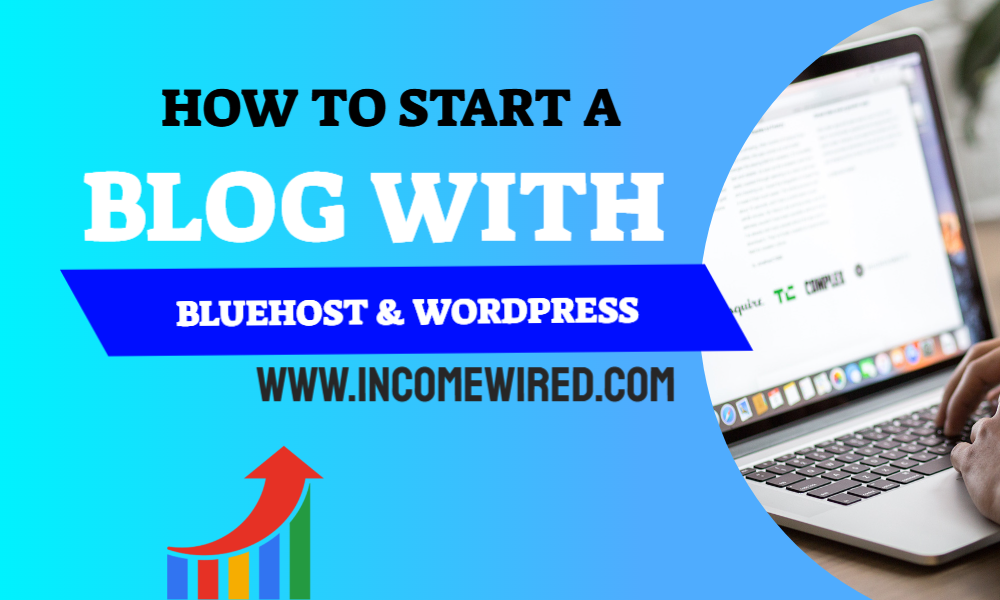we help service-based business owners, freelancers, and aspiring businesses with our content & services & When readers purchase services discussed on our site, we often earn affiliate commissions that support our work. Find out more about Income Wired
Hello there! Are you struggling to build an engaged audience for your blog niche? Well, fret no more because I have some valuable tips and tricks that will help you to create a community of loyal followers who are genuinely interested in your content.
Before we dive into the specifics, let’s define what we mean by an engaged audience. An engaged audience is a group of individuals who are active participants in your blog community. They regularly consume your content, share it with others, and actively participate in conversations and discussions around your blog topic. They are more than just passive readers; they are invested in your blog and are willing to engage with you and your content on a deeper level.
So, why is it so important to build an engaged audience for your blog niche? The answer is simple. Your audience is the backbone of your blog, and without them, your blog will not thrive. Building a loyal audience takes time and effort, but the benefits are priceless. An engaged audience can lead to increased traffic, higher engagement rates, increased brand awareness, and even monetization opportunities.
Now, let’s dive into the steps you can take to build an engaged audience for your blog niche. We’ll cover everything from defining your niche to engaging with your audience, collaborating with other bloggers, and offering value to your readers. By the end of this guide, you’ll have a solid understanding of how to create a community of loyal followers who are excited to engage with your content.
So, let’s get started and learn how to build an engaged audience for your blog niche!
Step 1. Define Your Niche


Defining your niche is the first and most crucial step in building an engaged audience for your blog. A niche is a specific topic or subject area that you will be covering in your blog. It’s important to define your niche so that you can create content that resonates with your audience and establishes you as an authority in your field.
To define your niche, you need to ask yourself a few questions:
- What topics am I passionate about?
- What topics do I have expertise in?
- What topics do I think my target audience will be interested in?
Once you have answered these questions, it’s time to research and validate your niche. Start by using tools like Google Trends, keyword research tools, and social media analytics to determine the popularity and demand for your niche. You want to make sure that your niche is not too narrow, but also not too broad. You want to find a balance between having enough content to write about and not having too much competition.
When defining your niche, it’s important to keep in mind that your niche should align with your blog’s mission and goals. It’s also important to stay true to your niche and not deviate too far from it. Your audience follows you because they are interested in your niche, and if you start covering topics outside of your niche, you risk losing their interest and engagement.
One way to stay on track with your niche is to create a content strategy that outlines the types of content you will be creating and the topics you will be covering. Your content strategy should be aligned with your niche and should address the pain points and interests of your target audience.
In addition to defining your niche, it’s also important to establish your unique voice and perspective. You want to differentiate yourself from other bloggers in your niche by offering a unique perspective or approach to your topic. Your voice and perspective should be authentic and consistent across all your content.
Step 2. Create Quality Content


Creating quality content is the foundation of building an engaged audience for your blog. Your content is what draws your audience to your blog and keeps them coming back for more. But what exactly is quality content, and how can you create it?
Quality content is content that is valuable, informative, and engaging to your audience. It’s content that addresses the pain points and interests of your audience and provides them with solutions or insights. Quality content is what establishes you as an authority in your niche and builds trust with your audience. Creating quality content is important for several reasons. First, it helps you to attract and retain an engaged audience. When your content is high-quality, your audience is more likely to share it with others, comment on it, and engage with it. This, in turn, helps to increase your blog’s visibility and reach.
Great quality content can help you to establish yourself as an authority in your niche. When you consistently create content that provides value and insights to your audience, you become known as a trusted source of information in your field. This can lead to increased opportunities for collaboration, partnerships, and monetization.
So, how can you create quality content that resonates with your audience and keeps them engaged? Here are some tips to get you started:
- Know your audience: Before you start creating content, you need to know who your audience is and what they are interested in. Use tools like Google Analytics and social media analytics to understand your audience’s demographics, interests, and behaviors. This will help you to create content that addresses their pain points and interests.
- Use a clear and engaging tone: Your tone and style of writing can have a big impact on how your audience perceives your content. Use a clear and engaging tone that is easy to read and understand. Avoid jargon and technical language, and use storytelling and personal anecdotes to connect with your audience.
- Focus on quality, not quantity: It’s better to create one high-quality piece of content than several low-quality pieces. Focus on creating content that is valuable, informative, and engaging to your audience. Don’t just create content for the sake of creating content.
- Use visuals: Visuals like images, infographics, and videos can make your content more engaging and shareable. Use visuals to break up your text and illustrate your points.
- Be consistent: Consistency is key when it comes to creating quality content. Create a content schedule and stick to it. This will help you to build a loyal audience who knows when to expect new content from you.
- Stay up-to-date: Stay up-to-date with the latest trends and news in your niche. This will help you to create content that is timely and relevant to your audience.
Step 3. Optimize Your Content for Search Engines


Creating quality content is essential for building an engaged audience for your blog, but it’s not enough on its own. To ensure that your content reaches as many people as possible, you need to optimize it for search engines. Search engine optimization (SEO) is the practice of optimizing your website and content to improve its visibility and ranking on search engine results pages (SERPs). Here’s why optimizing your content for search engines is important, and how you can do it.
It helps to increase the visibility and reach of your content. When your content appears on the first page of search results for relevant keywords, it’s more likely to be seen and clicked on by your target audience. This, in turn, can lead to increased traffic and engagement on your blog. It can help you to reach a wider audience. By targeting specific keywords and phrases that are relevant to your niche, you can attract new readers who are searching for information on those topics.
Finally, optimizing your content for search engines can help to establish your authority in your niche. When your content appears at the top of search results for relevant keywords, it signals to your audience that you are a trusted source of information in your field.
If you’re looking for some easy tips to start off with, here’s a handy list:
- Do keyword research: Keyword research is the process of identifying the keywords and phrases that your target audience is searching for. Use tools like Google Keyword Planner, SEMrush, and Ahrefs to identify relevant keywords and phrases for your niche. Then, incorporate these keywords into your content in a natural and organic way.
- Optimize your on-page elements: On-page optimization refers to the elements on your webpage that you can control, such as your title tags, meta descriptions, header tags, and content. Use your target keywords in your title tags and meta descriptions, and use header tags (H1, H2, H3, etc.) to structure your content in a way that is easy to read and understand.
- Write high-quality content: Quality content is important for both your audience and search engines. Search engines favor content that is informative, engaging, and valuable to readers. Focus on creating content that addresses the pain points and interests of your target audience.
- Use internal linking: Internal linking refers to linking to other pages on your website within your content. Internal linking helps search engines to understand the structure of your website and the relationship between different pages. It also helps to keep readers engaged and encourages them to explore more of your content.
- Use multimedia: Multimedia, such as images, videos, and infographics, can make your content more engaging and shareable. Use multimedia to break up your text and illustrate your points.
- Optimize for mobile: With the majority of internet users accessing the web on their mobile devices, it’s important to ensure that your content is optimized for mobile. Use a responsive design that adjusts to different screen sizes, and ensure that your content is easy to read and navigate on a mobile device.
Step 4. Promote Your Blog on Social Media


Promoting your blog on social media is crucial for taking it to the next level. It can help increase your visibility and reach, attract new readers, and grow your audience. With over 4 billion active social media users worldwide, social media platforms offer a huge audience for your content. By establishing a strong social media presence and sharing valuable content with your followers, you can also build your brand and establish yourself as a thought leader in your niche.
Additionally, promoting your blog on social media allows you to engage with your audience. Social media platforms provide a unique opportunity to interact with your followers, answer their questions, and gather feedback. By engaging with your audience, you can create a community around your blog and build a stronger relationship with your readers. This can ultimately lead to increased loyalty and word-of-mouth marketing, as satisfied readers are more likely to share your content with their own social media networks. Overall, social media marketing is an essential part of any blog promotion strategy and can help you to reach a wider audience, increase your traffic, and build your brand.
And of course, we’ve got your back with our tips!
- Choose the right platforms: There are many social media platforms available, but not all of them are suitable for promoting your blog. Choose the platforms that are most popular among your target audience, and focus your efforts on those platforms. For example, if your target audience is primarily professionals, LinkedIn might be the best platform for you.
- Create engaging content: Social media is all about engagement, so it’s important to create content that is visually appealing, informative, and shareable. Use high-quality images, videos, and graphics to make your content stand out, and focus on creating content that addresses the pain points and interests of your target audience.
- Share your content regularly: To keep your audience engaged and attract new followers, you need to share your content regularly. Create a content calendar and schedule your posts in advance to ensure that you are sharing your content consistently.
- Engage with your audience: Social media is a two-way conversation, so it’s important to engage with your audience. Respond to comments and messages promptly, and ask questions to encourage discussion.
- Use hashtags: Hashtags are a great way to increase the visibility of your content on social media. Research relevant hashtags for your niche and use them in your posts to help your content reach a wider audience.
- Collaborate with others: Collaborating with other bloggers, influencers, and brands can help you to reach new audiences and build your brand. Look for opportunities to collaborate with others in your niche, such as guest posting, social media takeovers, and joint giveaways.
Step 5. Engage With Your Audience


Congratulations on creating high-quality content, optimizing it for search engines, and promoting it on social media! However, to take your blog to the next level, it’s crucial to engage with your audience. Engaging with your readers is an essential part of building a successful blog, as it can help you to build stronger relationships with your audience, gather feedback, and improve your content.
Engaging with your audience can help you establish trust and credibility with your readers. By responding to comments and messages, and demonstrating that you value their feedback, you can establish yourself as an authority in your niche and build a loyal following. This can also help you to gather feedback and improve your content. By listening to your readers and addressing their concerns, you can create content that better meets their needs and interests.
Engaging with your audience can also help you to build a community around your blog. By encouraging discussion and interaction, you can create a space where readers can connect with each other and share their ideas and experiences. This can lead to a more active and engaged audience, as well as increased loyalty and word-of-mouth marketing. In conclusion, engaging with your audience is crucial for building a successful blog, and it can help you to establish trust, gather feedback, and build a community around your content.
Check out this mini-guide that we’ve compiled just for you:
- Respond to comments and messages: When readers leave comments on your blog or send you messages, make sure to respond promptly and thoughtfully. Thank them for their feedback, answer their questions, and show that you value their input.
- Ask questions: Encourage discussion by asking questions in your blog posts and social media updates. Ask for feedback, opinions, and ideas, and respond to the comments you receive.
- Host contests and giveaways: Hosting contests and giveaways are a great way to engage with your audience and attract new followers. Offer prizes that are relevant to your niche and ask readers to share their thoughts or experiences to enter.
- Create polls and surveys: Polls and surveys are a great way to gather feedback from your audience and get a better understanding of their needs and interests. Use a tool like Google Forms to create surveys and share them on your blog and social media.
- Share user-generated content: Sharing content created by your readers is a great way to show that you value their contributions and build a sense of community. Ask readers to share their photos, stories, or opinions on social media and feature them on your blog.
Step 6. Collaborate With Other Bloggers


Working with other bloggers is an effective way to grow your audience, increase your reach, and build relationships with fellow content creators in your niche. Collaborations can take various forms, such as guest posts, co-created content, social media collaborations, and more. Let’s delve into the significance of collaborating with other bloggers and provide some tips on how to get started.
Collaborating with other bloggers can offer several benefits to your blog. Firstly, it can help you reach a broader audience by partnering with bloggers who share a similar readership. Secondly, collaborating with other bloggers can help you create more diverse and valuable content by combining your knowledge and perspectives with theirs. Furthermore, collaborating with other bloggers can help you develop valuable relationships in your niche. By working together on projects and supporting each other’s content, you can create a network of like-minded bloggers who can help you grow your blog and achieve your goals.
Looking for tips on how to collaborate with other bloggers? Check these out:
- Reach out to bloggers in your niche: Find bloggers who share a similar audience and contact them to propose a collaboration. Clearly explain the type of collaboration you’re interested in and how it can benefit both parties.
- Guest posting: Offer to write a guest post for another blogger’s website in exchange for exposure and a backlink. Ensure that the content you provide is high-quality and relevant to the blogger’s audience and includes a link back to your website.
- Co-created content: Collaborate with another blogger to create content together, such as a podcast episode, video, or blog post. Establish clear roles and responsibilities and communicate regularly to ensure that the content aligns with both parties’ goals and values.
- Collaborations on social media: Partner with other bloggers on social media to reach a wider audience and increase engagement. Examples include sharing each other’s posts, hosting joint social media challenges or giveaways, or collaborating on Instagram Reels or TikTok videos.
- Support each other’s content: Even if you’re not collaborating on a specific project, supporting other bloggers in your niche is essential. Examples include sharing their content on social media, leaving thoughtful comments on their blog posts, and collaborating on larger initiatives, such as fundraising or community events.
Step 7. Offer Value to Your Audience


The main objective of any blogger should be to provide value to their audience. When readers feel that they’re benefiting from the content, they’re more likely to engage with it, share it, and become loyal followers of the blog. This section will delve into the significance of offering value and provide effective tips to achieve it.
Providing value is a vital element in establishing a successful blog. By creating content that solves problems, answers questions, or offers valuable information, you position yourself as an expert in your niche and build trust with your readers. Continuously delivering value helps to attract and retain loyal readers who look up to your blog for guidance, inspiration, and entertainment.
Additionally, providing value is crucial in building an engaged audience. When readers perceive that your blog provides them with something valuable, they’re more likely to share it, leave comments, and participate in discussions. This engagement helps to expand your reach and visibility and attract new readers to your blog.
Here are some tips to offer value to your audience:
- Know your audience: Understand who your readers are, what they’re looking for, and the challenges they’re facing. Conduct audience research such as surveys or interviews to gather this information and tailor your content accordingly.
- Solve problems: Addressing the problems your readers face is one of the most effective ways to offer value. Creating content that helps them overcome a challenge or accomplish a task is immensely beneficial.
- Provide useful information: Sharing industry news, offering tips and tricks, or providing insights into a particular topic can be an excellent way to offer value.
- Create engaging content: To retain your audience, create content that is informative and entertaining. Incorporate humor, storytelling, or visual elements into your posts.
- Be authentic and transparent: Authenticity and transparency are vital in establishing a personal connection with your audience. By sharing your experiences, perspectives, and opinions, you can build trust and credibility with your readers.
To Go Over Things Again
Building an engaged audience is essential for the success of any blog. By following the steps outlined in this guide, you can attract and retain loyal readers who will engage with your content, share it with others, and help to grow your blog’s reach and visibility. Let’s recap the steps we’ve covered in this guide:
- Define your niche and target audience
- Create a content strategy
- Create quality content
- Optimize your content for search engines
- Promote your blog on social media
- Engage with your audience
- Collaborate with other bloggers
- Offer value to your audience
Remember, building an engaged audience is a process that takes time, effort, and dedication. It’s important to be consistent in your content creation and promotion efforts and to always put your audience’s needs and interests first. Building an engaged audience requires a combination of strategy, creativity, and hard work. By following the steps outlined in this guide and continuously adapting to your audience’s needs and preferences, you can build a thriving blog that serves as a valuable resource for your readers. So, start implementing these steps today, and watch your engaged audience grow!



